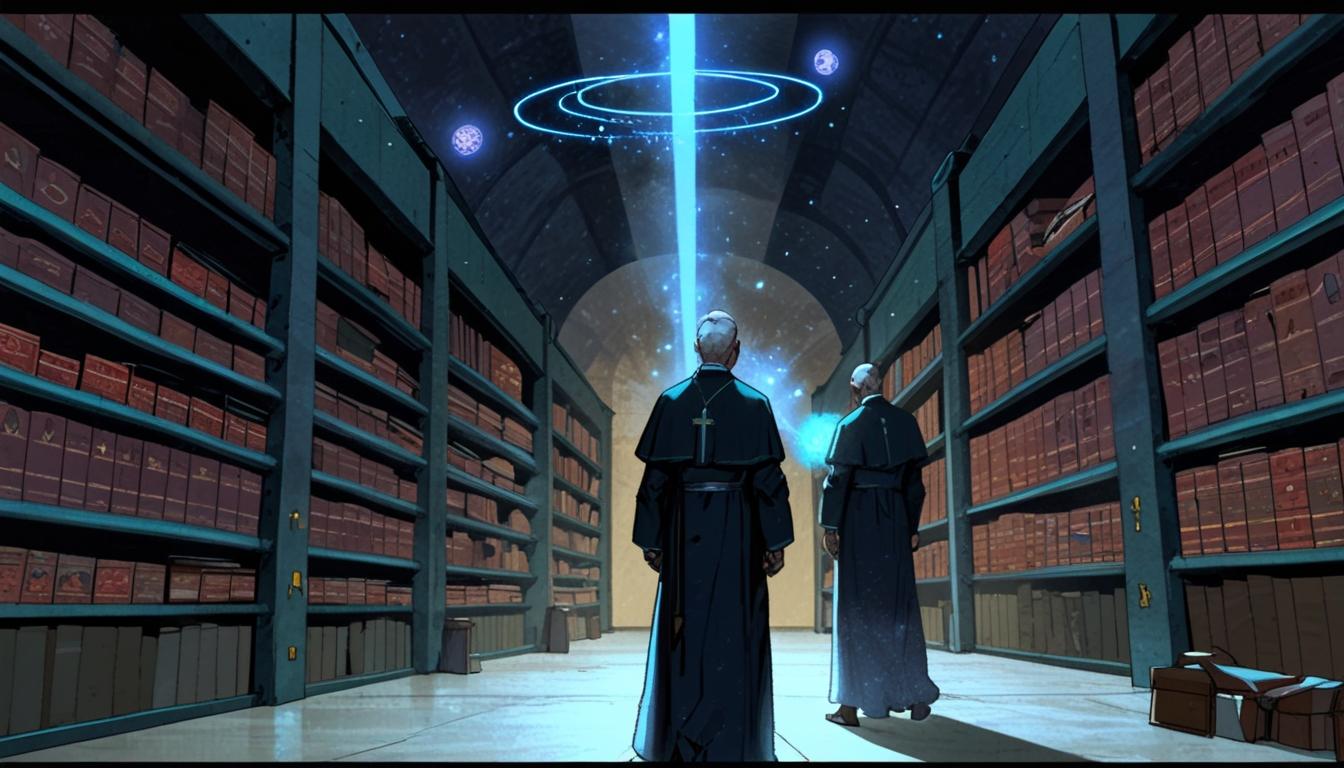The Vatican's Secret Archives: A Cosmic Connection?
Following the recent passing of Pope Francis, there has been a renewed emphasis from UFO enthusiasts on urging the Vatican to unveil its enigmatic archives. Many believe that these vaults hold long-suppressed evidence of extraterrestrial encounters, historical narratives often cloaked in spiritual terminology. Prominent voices, such as former U.S. intelligence officer David Grusch, have amplified this discourse, alleging that the Vatican has shielded knowledge of alien life for decades.
Diana Walsh Pasulka, a professor of religious studies at the University of North Carolina Wilmington, is among the scholars who have delved into the Vatican's extensive collection, officially known as the Vatican Apostolic Archives. This repository, established in 1612, comprises over 80 kilometres of shelving that contains various documents, including papal correspondence and detailed historical records, some of which might pertain to alien life. Pasulka's recent work, American Cosmic, explores these themes, revealing that the archives are filled with accounts that echo contemporary UFO phenomena.
In her research spanning centuries, Pasulka has unearthed accounts of mysterious lights and supernatural beings diverging from the norms of historical understanding. During her investigations into teachings on purgatory, she stumbled upon reports describing "orbs of light," "luminous beings," and "spinning suns." She asserts, "The historical record is filled with these kinds of events. The people at the Vatican, they don't even know where to look—it’s in their basements." This reflects a broader trend in which religious experiences were historically interpreted through a spiritual lens, contrasting with today’s scientific framing of similar occurrences.
One particularly notable case involves Sister Maria of Ágreda, a 17th-century Spanish nun renowned for her mystical experiences, which she documented in writings that conjure visions reminiscent of modern UFO narratives. Claiming to bilocate or spiritually transport herself to far-off lands, Sister Maria's accounts often included encounters with Indigenous peoples who described a lady in blue—a figure matching her appearance—despite her having never left Spain. According to Pasulka, these stories suggest intersections between religious mysticism and extraterrestrial encounters, a notion that increasingly resonates with contemporary discussions of UFO phenomena.
The Vatican’s connection to unidentified aerial phenomena isn’t merely a relic of the past. Grusch notably claimed that Pope Pius XII played a covert role during World War II in relaying information regarding an alien craft recovered under Benito Mussolini's regime in Northern Italy. Such claims, while ostensibly lacking rigorous verification, have breathed fresh life into the discourse surrounding the church's historical engagement with the concept of non-human intelligence. Grusch recounted how the craft was stored securely in Italy before being transferred to the United States, asserting that such interactions signify a deeper, systemic concealment of knowledge surrounding UFOs.
Moreover, significant religious events have long drawn parallels to modern interpretations of UFO sightings. The Miracle of Fatima in 1917 is often referenced; thousands witnessed phenomena that included the sun seeming to dance in the sky, an event chronicled extensively in historical accounts. Pasulka argues that both the apparitions experienced by the children and the luminous beings encountered in centuries past demonstrate a continuity between historical religious experiences and contemporary UFO sightings.
Leading experts, including Garry Nolan from Stanford University, are rallying for access to the Vatican Apostolic Archives, viewing it as a crucial source of information on unknown phenomena. Nolan asserts that the Vatican possesses 'an aura of both mysticism and a feeling of deep truth,' hinting at the potentially transformative insights that could emerge from these ancient texts. He suggests that our engagement with these archives could unlock knowledge capable of addressing modern existential crises, such as climate change and global conflict.
As calls for transparency echo louder post-Pope Francis, the intersection of faith, history, and unidentified phenomena continues to provoke interest and speculation. Witnessing the unfolding drama of claims and counterclaims involving the Vatican, one thing remains evident: the quest for answers pertaining to these enduring mysteries may lead to connections between our spiritual history and a broader cosmic reality.
Reference Map:
- Paragraph 1 – [1], [4]
- Paragraph 2 – [1], [2], [3]
- Paragraph 3 – [1], [7]
- Paragraph 4 – [1], [5]
- Paragraph 5 – [1], [6]
- Paragraph 6 – [1], [2]
- Paragraph 7 – [3], [6]
Source: Noah Wire Services
